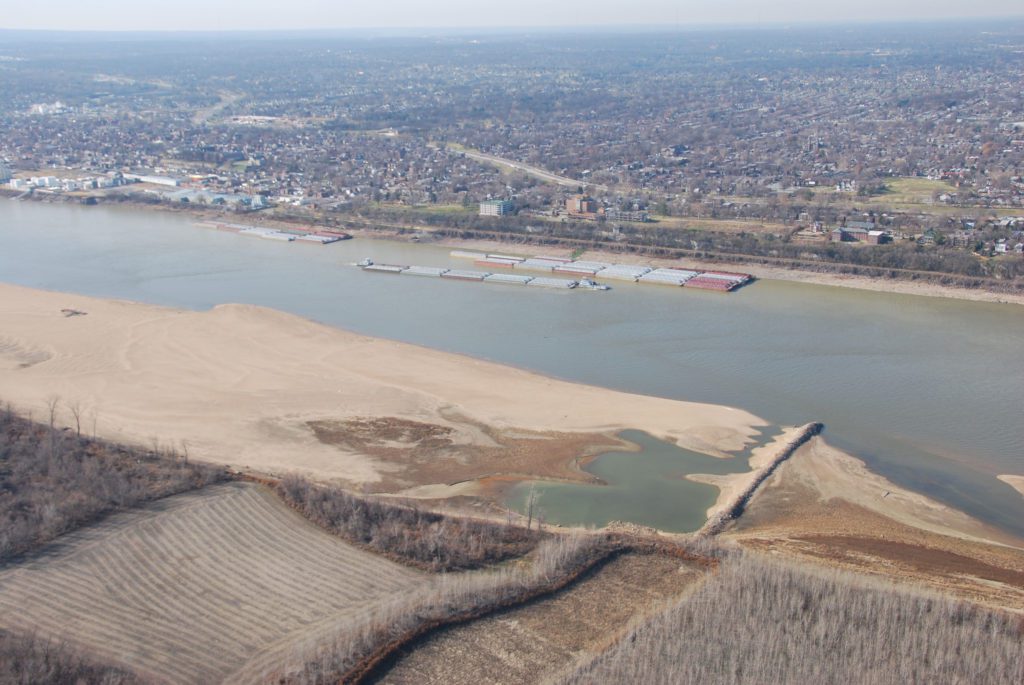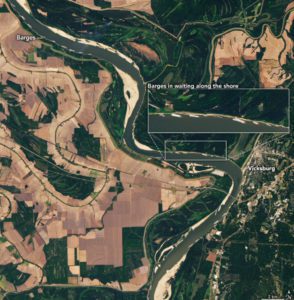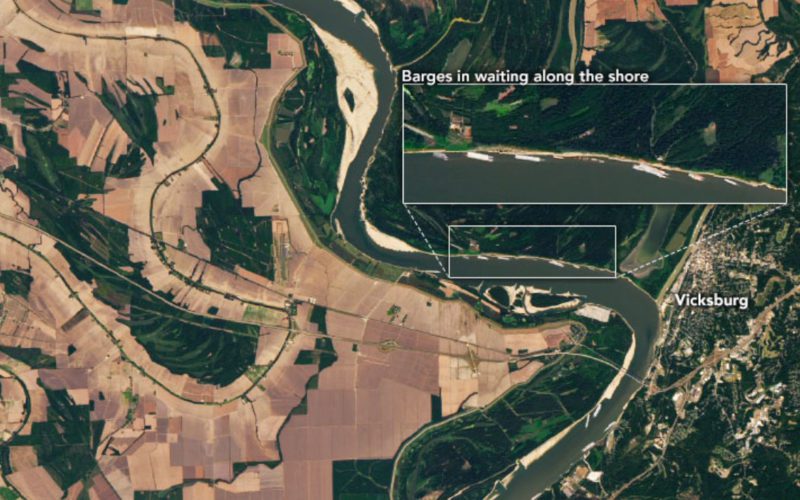
Lack of rain in the central United States has caused unprecedented low water levels along the Mississippi River throughout the fall, contributing to a rise in groundings and other disruptions on the vital waterway.
The low water levels have frustrated shipping and agriculture industries, which were preparing to ship the country’s seasonal grain harvest.
“For the soybean industry, it’s particularly acute, given the fact that 80 percent of our exports occur between the months of September and February,” Mike Steenhoek, executive director of the Soy Transportation Coalition told Professional Mariner. “We just have this window of time to be the predominant exporter for the global marketplace.”

In late October, the U.S. Army Corps of Engineers (USACE) marked record lows on the Mississippi from Cairo, Ill., to Arkansas City, Ark. Levels on southern parts of the river hovered a few feet — or in some cases just inches — away from lows recorded during the 1988-1990 drought considered the worst in the American history. In Memphis, the USACE recorded water levels more than 11 feet below zero level.
In surreal scenes, some sections of the river were nearly waterless for weeks. Residents living near Cape Girardeau, Mo., walked to the island of Tower Rock roughly 100 yards from the bank. And near Baton Rouge, La., low waters unearthed a shipwrecked trading vessel from the early 20th century.
Every year, the U.S. shipping industry transports almost 418 million tons of cargo on the Mississippi River system, according to the trade group American Waterways Operators. Particularly dependent on the river are fuel, food products, building materials and other commodities shipped in bulk, often from the interior of the U.S. to foreign ports.
Some shippers have resorted to railways or highway but these transportation systems cannot match the capacity of river barges, Ben E. Lerner, vice president for public affairs and communications for American Waterways Operators told Professional Mariner.
“We move the building blocks of the American economy up and down the Mississippi River,” said Lerner, who added that a standard 15-barge river tow keeps about 1,000 trucks off the highway.
Shipping companies have decreased the size of barge configurations and cut the weight of cargo — sometimes by 50 percent — all to lessen the risk of grounding, Lerner said. Some industries have put commodities in storage and are literally waiting for rain.
Disruption in the Mississippi Valley could impact global commodity costs that have already risen sharply due to the ongoing fallout from the Covid-19 pandemic and Russia’s invasion of Ukraine.
“This year, in particular, American agricultural products are even more sought after, given the war in Ukraine and the effect that that war is having on global agricultural supply,” said Lerner. “So it is a severe situation for our industry and it’s got far-reaching economic implications at this point.”
The USACE has been dredging the river and releasing water from dams to help facilitate water traffic. Still, river pilots and ship pilots that work on the river have reported ongoing challenges.
“Whenever the Mississippi River drops to less than five feet on the Baton Rouge gauge, we have terminals that can’t load to maximum draft,” L.M. “Toby” Wattigney, president of the New Orleans-Baton Rouge Steamship Pilots Association told Professional Mariner. “Some terminals require maintenance dredging to be able get the deep-draft ships into the terminals. USACE has done a wonderful job of maintaining the channel throughout our route, but we are experiencing draft issues when vessels transit into close proximity of some terminals.”
The low water levels have stretched the resources of the Corps, according to Clinton Willson, a professor of civil and environmental engineering and the director of Louisiana State University’s Center for River Studies.
“The Corps of Engineers doesn’t necessarily have the funds or the number of dredgers to maintain the depth they need for the barges under these conditions,” Willson told Professional Mariner.
At all times, the agency uses dredging to maintain depths of at least 9 feet on most of the river and 50 feet for portions south of Baton Rouge, where seafaring vessels travel to ports and terminals along the river.
“They have those contracts in place,” said Willson. “They have the companies that they work with on a regular basis, but in this extreme, in this particular year, the levels are so low that they’re probably either having to dredge more locations at one time or dredge some locations more than they typically would in a normal year.”
What makes for a “normal year” will change in coming decades with the climate. Willson predicts both flooding and droughts will increase in frequency and intensity as weather events become more extreme.
“I do think that we want to use this to understand ways to better manage the river into the future and be prepared for not just the high-water events — which most people think about — but [also] these low water events, which have such a dramatic impact on the economy,” he said.

